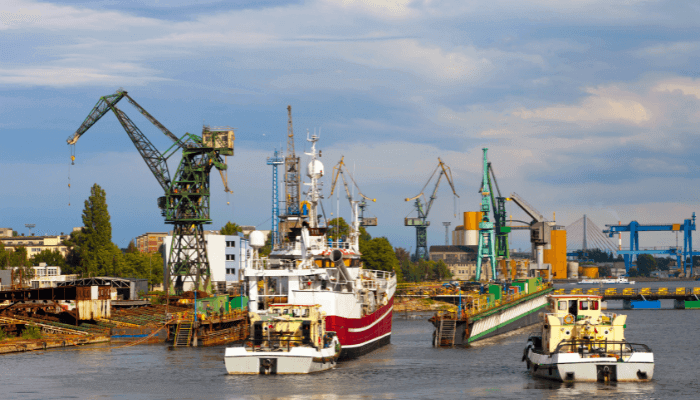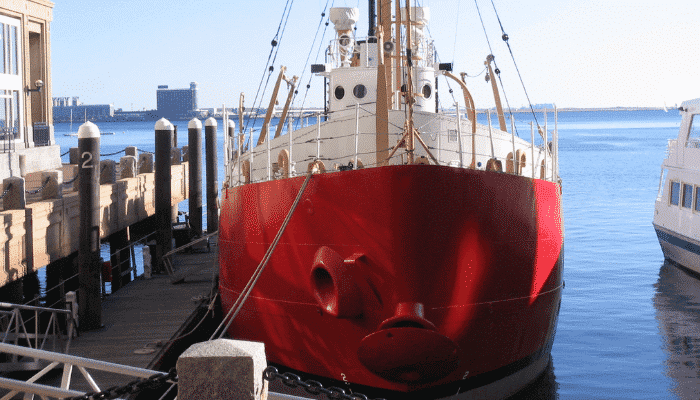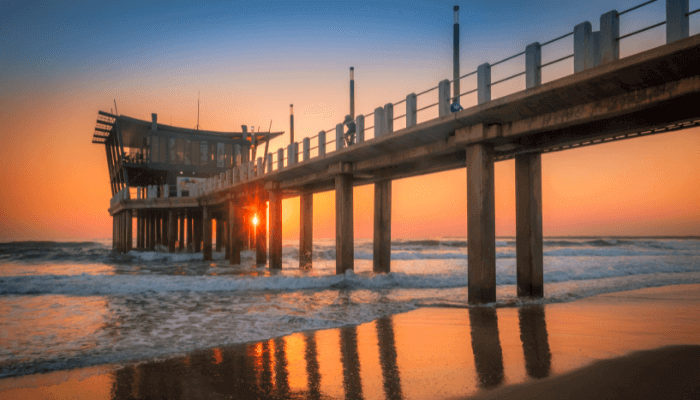Dock vs Pier – What is the Difference?
18/04/2022The words dock and pier are often used interchangeably in common usage to portray the same meaning, however, in the maritime world, they are important structures that allow shipping, trade, and sea recreation.
This article will explore the difference between a dock and a pier, their uses and types.
Dock vs Pier- the difference
Dock and Pier are referred to as synonyms by American English speakers but it is not so regarding their British counterparts. The former see the dock and pier as a narrow, sometimes tapering and an elongated construction built at the coast that spreads out in the waters, some distance from the shore.
Conversely, the British make a careful distinction between the two terms. They define a dock as an enclosed region in water, separate from the open sea or ocean, that is used primarily for trade and shipping operations such as loading and unloading ships, carrying out repairs etc.
Secondly, piers are defined as an elongated structures jutting out from the shores to the waters. Piers are often a walking pavement or platforms supported by pillars, made usually of concrete or wood. The adequately spaced pillars allow the structure to stand firm against the water and tidal currents.
 Uses of Docks
Uses of Docks
Docks have multiple purposes, the most important being mooring or berthing huge sea or ocean-going vessels and container ships. Since they are built in an enclosed water space, they provide a safe parking space for vessels. Docks are also used for maintenance, repair and even construction of ships.
Docks are an important maritime structure for loading or discharging cargo from ships. Since these operations take a few days, the vessel needs to be kept afloat at an adequate water level. The enclosed docks protect the ships from the water currents that may otherwise make loading and unloading a cumbersome activity.
Dock Construction
Docks can be constructed in two ways. First by making encircling wall-like structures in a sea or ocean, near the coastline. Secondly, by digging into dry land, bordering the shores, to carve out an enclosed water space, distinct from the open waters. Consequently, a dockyard is a structure comprising docks and other port equipment.
Docks are built on river ports or seaports and so both have different requirements and should be built accordingly. Different kinds of cargo are handled at inland and seaports. Also, the latter is a busy port in terms of the volume of traffic handled. All these factors have to be taken into account while constructing a dock at a river or a sea coast.

The entrance channel of the dock should be of adequate depth to allow easy movement of ships or container vessels into the docking space. Most times the entrance channel needs to be dredged regularly.
The dock should have a mechanism for replacing the old, stagnant water with fresh water. In the case of River ports or inland ports, old standing water is changed by constructing canals linked with nearby rivers or water bodies. However, it is easier for seaport docks as the water can be replaced with readily available seawater.
Secondly, the dock should be well-sheltered from winds and water currents. Some docks can be naturally sheltered, however, most have to be provided with artificial structures such as walls, lee breakwaters etc.
The construction of the dock should be such that it offers maximum berthing length. The dock should be straight and not circular or curved as it would be inconvenient for vessels to berth. A straight construction offers increased berthing space. Hence, the dock should avoid any bendings and consist of straight turns.
There are many different dock shapes such as:
Rectangular dock, (shaped like a rectangle it provides maximum space for berthing), diamond dock ( the long sides are expanded according to the dock’s capacity). The third is the Quay dock which comprises numerous protruding quays in the dock.
Types of Docks
Generally, docks are classified into two broad categories-
Wet Docks and Dry Docks.
Wet docks
As the name suggests, wet docks are ones in which the water is encircled by gates, so that ships can keep afloat when there is a low tide, in regions with varying tidal ranges. Wet docks aid in maintaining the level of water despite the rising and falling tides. These docks allow for smooth trading operations such as cargo handling, berthing, etc. They are also called harbour docks.
The earliest wet dock was constructed in 1703 on the Thames, known as the Howland Great Dock but it was devoid of the necessary port facilities. The first commercial wet dock known as the Old dock was constructed at Liverpool in 1715, comprising numerous warehouses and a capacity to accommodate about 90 to 100 seagoing vessels. Wet docks are crucial for carrying out international maritime trade and are important economic assets for the country.
Dry docks
A dry dock is also a similar structure with gates to control the water level, however, the enclosed water can be drained for examining vessels, carrying out ship repair, maintenance and construction.
The world’s earliest dry dock currently in use was built in 1495, at HMNB Portsmouth during the time of Henry VII of England.
There are 5 kinds of dry docks:
Graving dock– This is a kind of dry dock with a depressed compartment like structure, accompanied by enclosing walls and a paved floor. The open side of the compartment is incorporated with an opening gate which is the dock entrance.

Floating dry dock – It is a submersible construction that can move the vessel out of the water and keep it afloat due to its buoyant nature. This kind of dry dock is made of steel and has a hollow interior. It comprises two walls and an open-ended floor.
When a ship needs to be repaired, this dock can be submerged to an adequate water depth by releasing water into the inner compartments. Also known as ballasting, this process aids in safe berthing. After the vessel has berthed, the dock is lifted along with the vessel by drawing the water from the compartments using a powerful pump.
Marine railway dock– This type of dock comprises an inclined structure that extends from the coast into the water, having a cradle in which the ships are loaded and then hauled on a slip. It is useful to lift a ship out of water for repair purposes. The cradle of this dock is made of steel, movable on the inclined plane. It is supported by rollers, resting on tracks.
Lift dry dock – This type of dry dock is a movable structure that can be submerged and also raised from water using hydraulic power.
Ship lift dry dock – This dock allows the ships to be lifted out of the water using electric or hydraulic power. These docks are employed for dry docking the vessels and also putting them into the waters. This dock allows quick berthing and launching of multiple ships.
Uses of a Pier
Pier is a utilitarian construction with different functions. Maritime Piers are built for handling passenger vessels, and general cargo and also for berthing small boats and vessels. It also promotes fishing and seaside recreation.
Construction of Pier
A pier is a supporting structure in the case of buildings and bridges, however, in maritime terminology, it is a raised structure jutting out from the shore or coast into the water. It is not as elaborate as a dock but performs similar functions.
Piers can be constructed using different kinds of material. For instance, timber can be employed for constructing small, light-duty piers but it is not suitable for huge and busy facilities handling heavy cargo and people. Steel may be used for constructing piers but steel structures require maintenance and are a costly proposition. The most suitable material for constructing piers is concrete since it provides strength, and is fire-resistant and corrosion-free as well. Recently, corrosion-free and highly durable plastics are also being used in pier construction.

There are three kinds of piers based on the type of construction namely open, closed and floating piers.
Open piers consist of a deck that is supported by different kinds of piles and pillars depending on the pier’s usage. The platform is constructed after the supporting piles have been laid out. Piles are made of either steel or concrete or timber etc and the deck is usually of concrete. Open piers allow water movement beneath them and are not complex structures.
Closed piers are compact structures that restrict water flow beneath them. They comprise a long pavement made of concrete and cement, with a solid foundation. It is a much stronger construction compared to open piers, as it has an earth-filled foundation.
Floating piers have to be constructed carefully to avoid overburdening the structure. Since they float on water, they should be kept steady hence management of ballast and buoyancy of the structure is most important. Also, almost half of the structure is submerged in water which can provide an estimate of the required structural depth. These kinds of piers consist of numerous watertight compartments.
Types of Piers
Depending on their use piers can be divided into three types- working piers, pleasure piers and fishing piers.
Working piers handle passenger vessels and cargo from ocean-going vessels or small riverboats. One kind of a working pier is an elongated structure constructed at port facilities experiencing huge tidal ranges. Here the pier extends to a considerable length offshore to gain access to deep waters at the time of a low tide. Such piers usually handle specialised and not general cargo. For example, there are coal piers, grain piers, etc.
The world’s biggest working pier is in Progreso, Yucatan which extends about 5 miles into the Mexican gulf.
Pleasure piers
Pleasure piers were constructed in Europe from the 19th century onwards to promote ocean and sea recreation. Constructed primarily to serve the leisure tours of the elite section of society, pleasure piers may be closed, semi-closed, roofed or open structures that offer safe berthing of cruise ships, yachts and pleasure crafts. The earliest were constructed of wood but later iron and now steel is also employed.
Fishing piers
They are primarily used for fishing and provide access to fishing grounds. These piers have special fishing rigs that offer direct access to deeper waters. Also, such piers promote the fisheries sector by boosting seafood supplies for inland trade and exports.
Source: Marine Insight


